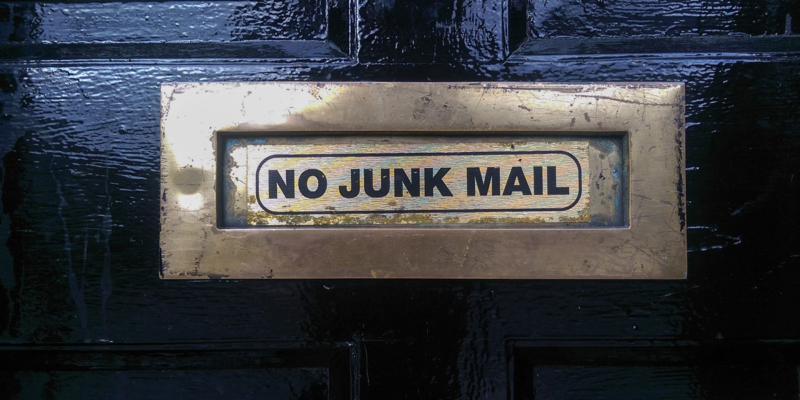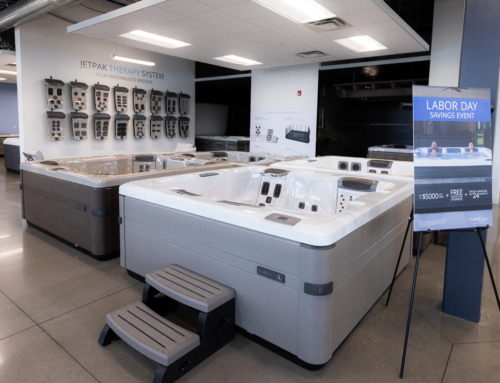The article “You’ve Got Mail: Automated Email Campaigns to Boost Your Business” talked about drip campaigns and broadcast emails. Today, we are going to focus on the how (and how to of) using autoresponders can help you turn leads into sales.
Autoresponders are programs that automatically send customized emails and/or texts. They allow you to set up a database of prospects and to compose targeted welcome, informational, promotional and follow-up messages to help you maintain contact with new prospects. You define what triggers a message and when the message is sent.
So, how can autoresponders work for your business?
Autoresponders for Lead Management
Keeping track of leads—who you’ve contacted, when you contacted them, and if it’s time to contact them again—is often one of the most frustrating aspects of sales. In fact, research shows a whopping 43% of sales reps only follow up with potential customers once, which is unfortunate because that same research shows that 80% of sales close AFTER the 5th contact with a prospect.
It is daunting to consider contacting every lead five, six, even seven times. After all, if you have ten leads and contact each of them seven times, that’s seventy emails or phone calls or a combination of the two. Think of the time away from the sales floor composing those emails would take.
Try to respond to every lead within an hour of receiving it because chances are yours isn’t the only store they are contacting.
With that in mind, it’s really no surprise so many sales reps have a “one-and-done” mindset when it comes to following up on leads. The good news is autoresponders make it possible for you to easily respond to every lead, as often as necessary because you only compose a message once.
Autoresponders can serve as lead management systems that not only allow you to spend more time on the sales floor, but also ensure timely follow-up with sales prospects. They are designed to provide measurable results, such as tracking clicks and open rates as well as monitoring results based on time of day and which types of emails are read the most. Automated responses allow you to continue to touch contacts over time, which increases the likelihood of turning a lead into a sale.
Benefits of Using Autoresponders
Whether you use autoresponders as part of a CRM (customer retention management system) or through a free service like MailChimp, they offer a host of benefits to any business:
- Informs prospects and customers about promotions, events, and specials
- Makes continuous contact with prospects easier
- Allows personalization through specific fields for images and information
- Sends automatic follow-up emails at whatever interval you set
- Builds relationships with both prospects and existing customers
- Offers a platform for educating both prospects and existing customers
- Provides a way for you to nurture prospects
- Affords an opportunity to increase sales
Using Autoresponders Effectively
It is nearly impossible to overemphasize the importance of tracking and responding to every single lead. Simply initiating an automated response isn’t all there is to it, though. You need to respond quickly and with the right information. Autoresponder emails should be personal, professional, and informative:
- Personal: Use the prospect’s name, the name of your company or dealership along with taglines and logos, the salesperson’s name along with a photo and a direct phone number, and end with a strong call to action.
- Professional: Pay attention to word choice, grammar and spelling. A good rule of thumb is if you wouldn’t send it to your mother, don’t send it to a prospect.
- Informative: Answer all the prospect’s questions in your first response. Meaning, don’t use the promise of answers to lure them into visiting the store; it’s a great way to alienate a lead.
Remember that timing is everything. Try to respond to every lead within an hour of receiving it because chances are yours isn’t the only store they are contacting. With 35 to 50% of sales going to the first vendor to respond, you want to respond before the competition does. You also want to avoid computer-generated, robotic-sounding messages with heavy sales pitches. People want these messages to target their specific needs, to be relevant, and to be interesting.
The most effective autoresponder messages are a continual process of consistently providing value no matter where prospects may be in their lifecycle.
The most effective autoresponder messages are a continual process of consistently providing value no matter where prospects may be in their lifecycle. Here is an example of using autoresponders effectively for lead management and follow-up:
- 1st and 2nd contact: Send “Welcome” and “Thank You” emails within 24 hours of contact (follow with a phone call in a day or two).
- 3rd and 4th contact: Send a follow-up email with personalized information within a week of first contact. Did they talk about back pain? Include information on specialized jets (follow with a phone call to let them know you sent them information). Did they mention kids and busy family life? Send them an article on the importance of quality together time without digital devices.
- 5th and 6th contact: Send another email inviting them to schedule a time to come in and test the jets you mentioned in the last email (call to schedule the appointment) or bring the whole family to try out your themed test soak room.
- 7th contact: They come to the store for a test spa experience.
Program the autoresponder to send the emails on specific dates or at specific intervals. You can also trigger specific responses based on the information in emails from prospects. After the 5th or 6th contact, place the prospect/customer on a long-term follow-up list for monthly broadcast emails about special offers, sales, events, and so forth.
Common Autoresponder Tools Worth Checking Out
If you don’t already have a CRM set up, you’ll need to take a look at automated email platforms. A good place to start your resource exploration is MailChimp, appeals to novice users for its easy-to-use, templated nature and free plan option. But there are a number of affordable options available that don’t require breaking your budget. Beyond pricing, here are specific features to look for when comparing autoresponders.
Basic autoresponder features include the ability to trigger automations when subscribing to a form, when a message is opened, or when a link in an email is clicked. Additionally, basic autoresponders allow tagging options, making segmentation very simple. More advanced features include lead scoring where you can score each lead based on what they do within the workflow. This helps with determining how how engaged the lead is/has become and ultimately how valuable the lead is.
Other features to check out include workflow/buyer journey design and the ability to create mobile friendly versions of your automated emails. And of course, each interface offers different pricing plans to consider. Here’s a quick list of other marketing automation services that could work for your business.
Final Tips
One key to any lead management system is to check leads often, at least once an hour, so you can respond to them as quickly as possible. Also, it’s okay to use templates as a guide for composing automated responses, but always rewrite them in your own words to avoid giving the same stock response to everyone.
Remember that 50% of leads are qualified but not ready to buy yet, so keep “nurturing” them in a way that keeps them engaged and your business top of mind. If someone asks to be removed from your contact list, do so politely and immediately. ALWAYS ask for referrals. Do you know that 91% of customers say they’ll give referrals when asked for them? So, ASK!
Remember that 50% of leads are qualified but not ready to buy yet, so keep nurturing them in a way that keeps them engaged and your business top of mind.
Finally, there are also instances when you absolutely DO NOT want to use an autoresponder. One instance is when you don’t have a strategy. Don’t just send random mass emails to everyone in your database. Autoresponders must have a specific goal to be effective; a goal like turning leads into buyers. Make sure your autoresponder emails are targeted and have a clear purpose.
The other instance when you should never use an autoresponder is when dealing with complaints, bad reviews, or otherwise dissatisfied leads. These situations must be handled personally, tactfully, and most definitely not with an automated response.
Regardless of where your leads come from—referrals, home shows or your own showroom floor—autoresponders take the frustration out of tracking and follow-up.









Leave A Comment